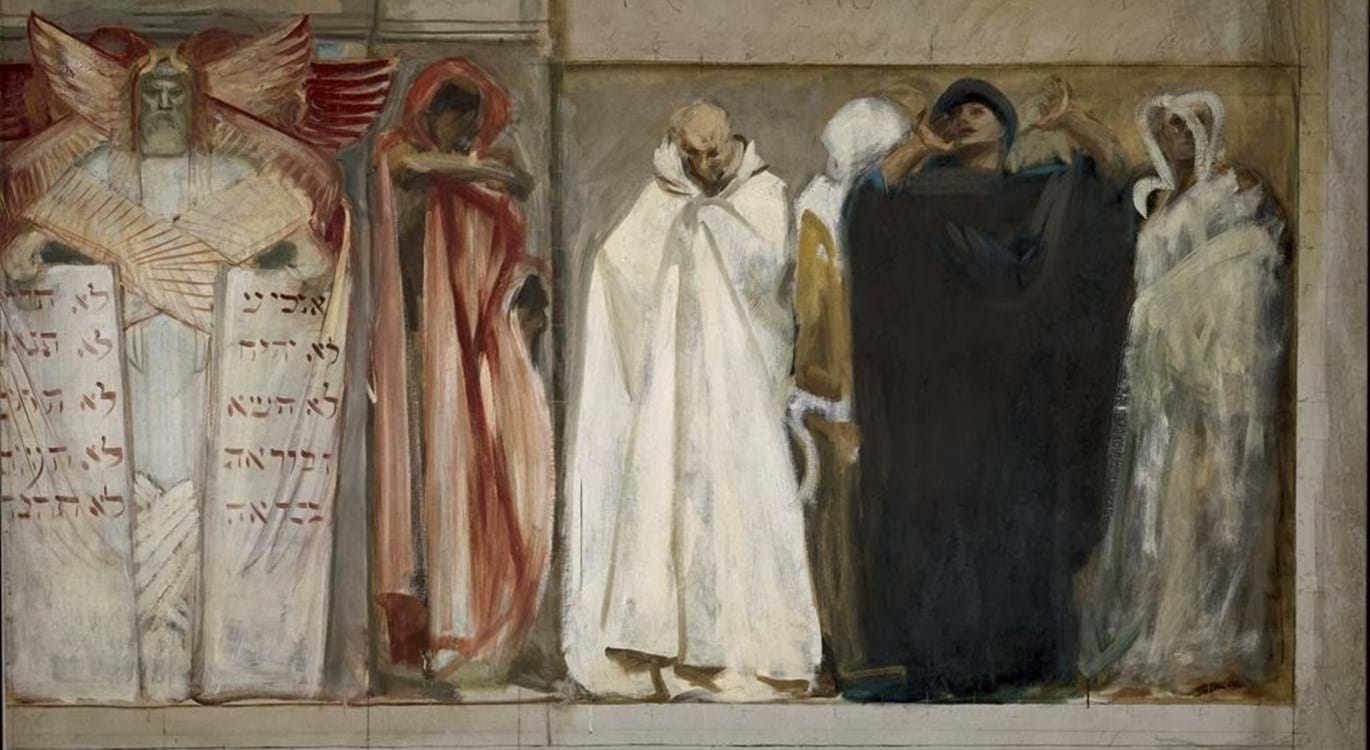. . . whom He has appointed heir of all things, through whom also He made the worlds; who being the brightness of His glory and the express image of His person, and upholding all things by the word of His power, when He had by Himself purged our sins, sat down at the right hand of the Majesty on high” (Hebrews 1:1-3).
The deepest and richest passage about the Lord Jesus Christ in the whole of Hebrews is positioned at the beginning of the treatise. We must plunge into the details of this key paragraph if we are to understand the rest of the letter.
God’s Message
God’s message came primarily to the Hebrew people. They were entrusted with the “oracles of God” (see Romans 3:2). This message had come to them in piecemeal portions through the Old Testament prophets. These holy men had been borne along by the Holy Spirit (see 2 Peter 1:21), and had given the nation a glimpse of a coming Messiah and a future Kingdom age. It was as if each of the prophets had come with their particular piece to add to the large jigsaw puzzle, and though it was beginning to take shape the picture had not yet been fully revealed. That is, until Christ came. All of a sudden, the full masterpiece was unveiled. The Hebrews should now see how God’s complete message had been centred in Christ and communicated through Him. In other words, God had spoken again, not merely in a group of prophets, but in His Son.
God speaks in a Son
Lest his readers don’t grasp just what he is saying, the writer elaborates more fully on the glories of the Son of God. He takes us from a “past” eternity to His present position at God’s right hand. He sweeps from creation, through redemption, to exaltation. In the centre of it all he unfolds something of the essential nature of the Son of God. He wanted them to understand the greatness of the One they knew as “Jesus the Nazarene”.
The writer knows that if he can get the Hebrews to appreciate the Lord Jesus as they should he will have no problem calling them away from unhealthy links to a Judaism that had made an idol of its religion and its temple.
Ora Rowan captures this truth very beautifully in her Christ-focused hymn: Hast thou heard Him, seen Him, known Him? She writes in the third stanza:
“What has stripped the seeming beauty
From the idols of the earth?
Not a sense of right or duty,
But the sight of peerless worth.”
Something of this “sight of peerless worth” is unveiled to us in the first few verses of Hebrews!
The eternal Son
Firstly we read of Jesus’ Sonship: “God . . . has in these last days spoken to us by His Son” (1:1). These days had been unprecedented. God had given his message “in a Son”.[1] His Messenger was a Person who is His equal, who fully answers to and expresses God’s nature. He had been in an eternal relationship with the Father as the Son. Our own “father-son” relationships are bounded by time and limited by our humanness. We think of a father as existing before a son, but this is not a distinction that we have in the Godhead, where each member of the Trinity is eternal, as are their relationships.
The Apostle John, in his writings, bears witness to this eternal relationship. It was a relationship of love. “You loved Me before the foundation of the world”, the Son says to His Father (John 17:24). It was a relationship of purpose. “The Father has sent the Son as Saviour of the world” (1 John 4:14) – they were united in their desire to save the world. It is this relationship that gives eternal meaning to the cross and a full expression of God’s saving grace: “God so loved the world that He gave His only begotten [or, unique] Son” (John 3:16a).
So it is in the Son that this wonderful new message from God comes; this task was not delegated to one of the prophets.
The Son’s Greatness
We then read of Christ as the Heir and Creator of the universe.
“. . . whom He has appointed heir of all things, through whom also He made the worlds”
Notice that He was appointed “heir of all things” before the act of creation is even mentioned. This suggests that the very reason for the existence of our universe is Christ – it is all for Him! That is a staggering thought.
The writer still hasn’t said enough; we read, “through whom also He made the worlds”. The original word for “worlds” can mean “ages” as well as the physical universe that is within those ages. To paraphrase, the writer exults: “He is no mere prophet, concerned with the ages, but rather He Himself is the great Creator of the ages”. He doesn’t simply foretell events like a prophet but is Sovereign over every event in history.
Having explained the Son’s relationship to the created universe, the writer now takes us a step further. The English Standard Version renders the next statement, “He is the radiance of the glory of God and the exact imprint of his nature”. This statement could never be made of anyone but the co-equal Son of God.
In the Old Testament, much was made of God’s glory being associated with a cloud. This cloud was called the Shekinah. The Shekinah covered the Tabernacle, the wilderness sanctuary; this cloud in some ways revealed but also concealed the glory of God – it was, after all, a cloud! There is no thought of concealment in the word “radiance”, or “outshining”. Just as the sun’s rays partake of the very essential character of the sun itself, but touch us and bring us a true awareness of the sun, so Christ is the “out-raying” of the glory of God.[2]
“But,” you might ask, “there is also the underlying substance or nature of God – that which makes God what He is. How does this Messenger measure up to that?” The answer is: “He is the exact imprint of His nature”. This either has the thought of exact correspondence to His nature or a perfect resemblance of His nature – whichever way we take it, He will fully communicate God to man, for He is truly equal to Him.
Mention is then made of Christ “upholding all things by the word of His power”. This contains the thought that Christ is the great “helmsman” of creation, steering it towards its destination, using simply His powerful word! Atlas, the ancient Greek god, is seen depicted as bowing under the weight of the world on his shoulders. Not so, God’s Son – His word is powerful enough!
“When He had by Himself made purification for sins . . .” There was a work that He accomplished with a special interest in it, and it cost Him much more than the creation of a universe. He must come down personally from His heavenly throne to earth before eventually dying on the cross as a sacrifice, in order to provide cleansing for sins. But more details of this will come later in the epistle.
Having done His priestly work of cleansing, Christ “sat down on the right hand of God”. While He takes His seat at God’s right hand, as it is His by divine right, He is also there by the invitation of His Father (see v.13). No other priest in the Bible sits in God’s presence, as their work is never finished – however Christ’s work of sacrifice is, and every Christian has benefited from its sufficiency.
In Conclusion
Before dealing with all the difficulties that the Hebrews are facing, the writer puts the Lord Jesus Christ front and centre of his message. The truth holds good for us as it did for the first century Hebrews. If only we could understand Christ better, and worship Him more, most of our problems would simply evaporate!
Prophets bow, for He has spoken,
Greater Prophet than them all,
He, the Word, the Son, the Substance,
He, the “Amen” and the “All”!
[1] The expression “by His Son” has been variously translated by NT scholars as “in Son” or “in a Son”. The emphasis appears to lie in the nature of the messenger – not a mere prophet but God’s equal, His Son.
[2] “His glory” is really “the Glory”. The Hebrews would understand this as a reference to God’s glory alone.



